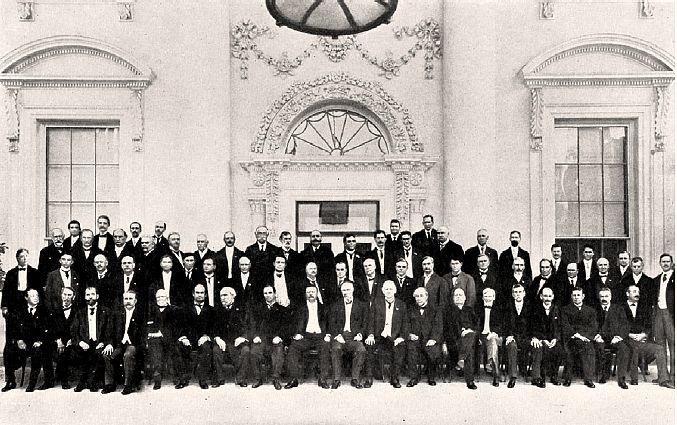When did environmental issues become so divisive, bitter, angry, and litigious? Historically speaking, that is a recent development. We generally think of America’s environmental awareness as beginning with Theodore Roosevelt and his allies: George Bird Grinnell, Gifford Pinchot, John Wesley Powell, John Muir and a few others, who gave the name “conservation” to the movement for the preservation and wise use of natural resources. They sounded the alarm about reckless exploitation of these resources, and predicted that unless scientific management of resources was enforced, America could not provide the resources needed for its future.
Roosevelt and Pinchot added millions of acres of national forests, controlled their use, and regulated their harvest. In 1907 Congress repealed the President’s authority to designate national forests in Oregon, Washington, Idaho, Montana, Colorado and Wyoming without congressional action. So, Pinchot quickly identified 16 million acres of forestlands in these states, which Roosevelt officially designated just before signing the new bill into law.
That Administration established wildlife refuges, reclamation projects, and national monuments, the latter authorized by the Antiquities Act of 1906. Within days of its passage, Roosevelt created Devil’s Tower National Monument in Wyoming, and within a few weeks, Petrified Forest, Cinder Cone, Lassen Peak, and Mount Olympus National Monuments. The first eleven monuments were fairly small, averaging about 3,000 acres. But in 1908, he designated a massive area in Arizona – 818,560 acres – as Grand Canyon National Monument, now a national park.

Roosevelt hosted the first two National Conservation Congresses at the White House and stressed conservation themes in all of his annual state-of-the-union messages. The “Progressive Era” continued through the next two administrations, in both parties (Woodrow Wilson created Rocky Mountain National Park in 1915), and well into the “Roaring ‘20’s.” Presidents Harding, Coolidge and Hoover together added 34 new monuments and several new national parks, including Bryce Canyon, Grand Teton, Shenandoah, and Great Smokey Mountains.
The 20’s also saw astonishing growth in Americans’ use of national parks and forests for recreation, whichever political party was in power. The automobile freed millions of Americans for weekend leisure, dramatically increasing the use of public parks and campgrounds. Management stressed using these lands for different simultaneous purposes: hunting, fishing, grazing, logging, mining, camping, hiking, photography, and just driving around with the ragtop down. National forests were marked with signs proclaiming them “Land of Many Uses.” Their purpose was carefully defined by Congress as “Multiple Use and Sustained Yield.” A law with that title, adopted in 1960, still governs much of the Forest Service’s mission.
During the depression, FDR added 22 more national monuments, along with national parks including Everglades and Big Bend. He created the Tennessee Valley Authority, Civilian Conservation Corps, and Rural Electrification Administration. While though those agencies may have been primarily about creating jobs by employing people in public works projects, they also tracked with Americans’ almost universal appreciation for environmental values.
The 1950’s brought a growing awareness that America’s national parks and campgrounds were getting old, especially at a time when more Americans than ever were driving long distances to visit them. In 1956, the Eisenhower Administration used the National Park Service’s upcoming 50th Anniversary to initiate a billion dollars’ worth of park improvements, including hundreds of visitor centers, park roads, campgrounds and trails. Americans again fell in love with their public lands, wildlife, and the environment.
At the same time, air and water pollution in the cities attracted increased attention, culminating in 1969 when a stretch of the Cuyahoga River in Cleveland caught fire, weeks after a major oil spill in California, and during planning for the first Earth Day. The largest wave of environmental policymaking since Theodore Roosevelt followed, still mostly bipartisan. The Republican Nixon/Ford Administrations and Democratic Congress began working together with unprecedented dedication to a common cause. The results included EPA, National Environmental Policy Act (1969), Clean Air Act (1970), Clean Water Act (1972), Federal Environmental Pesticide Control Act (1972), Ocean Dumping Act (1972), Endangered Species Act (1973), Safe Drinking Water Act (1974), Resource Conservation and Recovery Act (1976), Toxic Substances Control Act (1976), and Federal Land Policy Management Act (1976).
Most of the controversy, contention, and endless litigation we know today came only later – after what many see as overzealous enforcement, misinterpretation, and especially regulatory overreach that followed. But it is worth remembering that the purposes for which these laws were passed, and the dreams they represented, were widely supported by vast majorities of Americans, of both parties and all regions, for several generations. I think they still are.




Comments on this entry are closed.